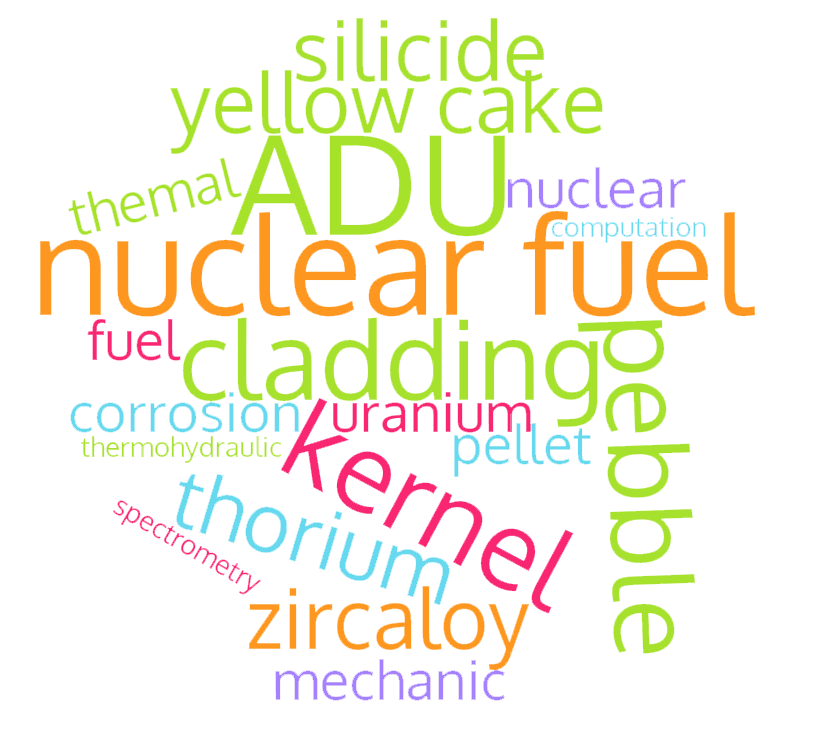PENGARUH SERBUK U-Mo HASIL PROSES MEKANIK DAN HYDRIDE – DEHYDRIDE – GRINDING MILL TERHADAP KUALITAS PELAT ELEMEN BAKAR U-Mo/Al
DOI: http://dx.doi.org/10.17146/urania.2015.21.2.2260
Sari
PENGARUH SERBUK U-Mo HASIL PROSES MEKANIK DAN HYDRIDE – DEHYDRIDE – GRINDING MILL TERHADAP KUALITAS PELAT ELEMEN BAKAR U-Mo/Al. Penelitian bahan bakar U-7Mo/Al tipe pelat dilakukan dalam rangka pengembangan bahan bakar U3Si2/Al untuk mendapatkan bahan bakar baru yang memiliki densitas uranium lebih tinggi, stabil selama digunakan sebagai bahan bakar di dalam reaktor dan mudah dilakukan proses olah ulangnya. Lingkup penelitian meliputi pembuatan: paduan U-7Mo dengan teknik peleburan, pembuatan serbuk U-7Mo dengan dikikir dan hydride - dehydride - grinding mill, IEB U-7Mo/Al dengan teknik kompaksi pada tekanan 20 bar, dan PEB U-7Mo/Al dengan teknik pengerolan panas pada temperatur 425oC. Paduan U-7Mo hasil proses peleburan cukup homogen, berat jenis 16,34 g/cm3 dan bersifat ulet, kemudian dibuat menjadi serbuk dengan cara dikikir dan hydride - dehydride - grinding mill. Serbuk U-7Mo hasil proses kikir berbentuk pipih, kontaminan Fe cukup tinggi, sedangkan serbuk hasil proses hydride - dehydride - grinding mill, cenderung equiaxial dengan kontaminan yang rendah. Kedua jenis serbuk U-7Mo tersebut digunakan sebagai bahan baku pembuatan IEB U-7Mo/Al dan PEB U-7Mo/Al dengan densitas uranium 7 gU/cm3 dan diperoleh produk dengan kualitas yang hampir sama. Hasil uji IEB U-7Mo/Al berukuran 25 x 15 x 3,15±0,05 mm, tidak terdapat cacat/retak, distribusi U-7Mo di dalam matriks cukup homogen dan tidak terdapat pengelompokan/aglomerasi U-7Mo yang berdimensi >1 mm. PEB U-7Mo/Al hasil pengerolan dengan tebal akhir 1,45 mm, memiliki ketebalan meat rerata 0,60 mm dan tebal kelongsong 0,4 mm dan terdapat 1 titik pengukuran kelongsong dengan ketebalan 0,15 mm. Dengan membandingkan penggunaan kedua jenis serbuk U-7Mo tersebut, IEB U-7Mo/Al dan PEB U-7Mo/Al yang dihasilkan memiliki kualitas hampir sama. Namun demikian penggunaan serbuk U- 7Mo hasil proses hydride - dehydride - grinding mill lebih baik karena proses pengerjaannya lebih cepat dan impuritas dalam serbuk dapat diperkecil.
INFLUENCE OF U-Mo POWDER BY MECHANICAL AND HYDRIDE - DEHYDRIDE - GRINDING MILL PROCESS RESULT OF U-Mo / Al FUEL PLATE QUALITY. Research of U-7Mo/Al fuel type plate is done in order to develop U3Si2/Al fuel to get a new fuel that has a higher uranium density, stable for use as fuel in the reactor and is easily done if the reprocessed. The scope of the research includes manufacture: U-7Mo alloy with smelting techniques, pulverizing U-7Mo to be filed and hydride–dehydride–grinding mill, U-7Mo/Al fuel core with the technique of compacting at a pressure of 20 bar, and U-7Mo/Al fuel plate with technique of hot rolling at a temperature of 425oC. The U-7Mo alloy results smelting process quite homogeneous, the density of 16.34 g/cm3 and is tenacious, then made powder by means of filed and hydride–dehydride–grinding mill. The U-7Mo powder shaped flat results miserly process, contaminants Fe is high enough, whereas powder process results hydride- dehydride-grinding mill, tend equiaxial with low contaminants. The second type of U-7Mo powder is used as a raw material for making U-7Mo/Al fuel core and U-7Mo/Al fuel plate with 7 gU/cm3 uranium density and obtained product with almost the same quality. The U-7Mo/Al fuel core test results measuring 25 x 15 x 3.15 ± 0.05 mm, there is no defect/crack, U-7Mo distribution in the matrix is quite homogeneous and there is no grouping/agglomeration U-7Mo dimension >1 mm. The U-7Mo/Al fuel plate outcome rolling with a final thickness of 1.45 mm, has a thickness of 0.60 mm and a mean meat cladding thickness of 0.4 mm, and there is one point of measurement of cladding with a thickness of 0.15 mm. By comparing the use of both types of U-7Mo powders the U-7Mo/Al fuel core and U-7Mo/Al fuel plate produced has almost the same quality. However, the use of U-7Mo powder results hydride– dehydride–grinding mill process is better because the workmanship is faster and impurities in the powders can be minimized.
Teks Lengkap:
PDFRefbacks
- Saat ini tidak ada refbacks.
Penerbit: Pusat Riset Teknologi Bahan Nuklir dan Limbah Radioaktif
Diindeks oleh:









